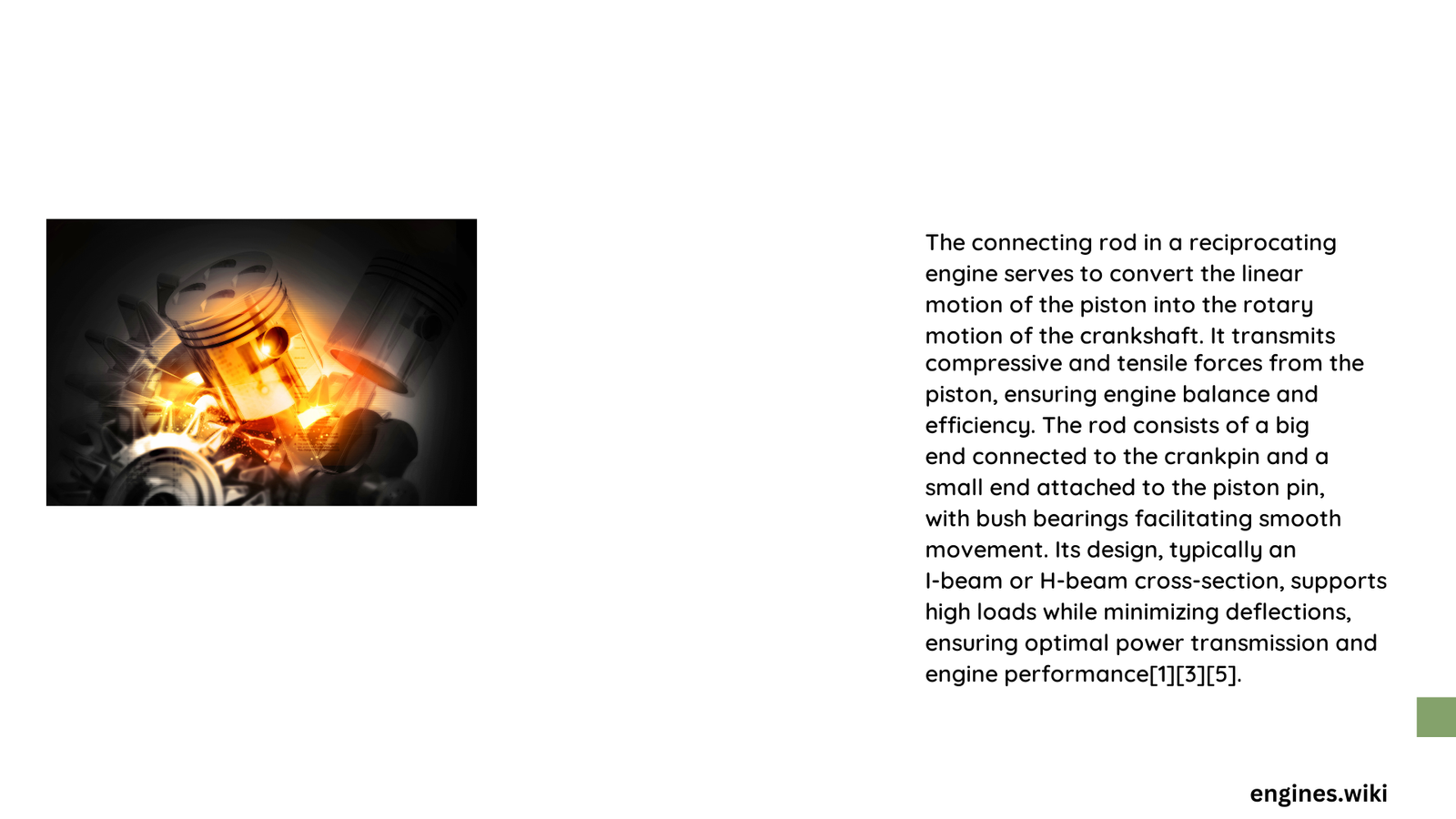In the complex world of internal combustion engines, the connecting rod serves as a critical mechanical link transforming linear piston motion into rotational power. This precision-engineered component acts as a fundamental power transmission mechanism, converting reciprocating vertical forces into circular crankshaft rotation, enabling efficient energy transfer and mechanical power generation across various engine configurations.
What Makes Connecting Rod Essential for Engine Operation?
How Does Connecting Rod Convert Motion?
The connecting rod performs a crucial mechanical translation between linear and rotational motion through several key mechanisms:
- Force Transmission: Transfers piston’s vertical forces directly to crankshaft
- Energy Conversion: Transforms reciprocating motion into rotational movement
- Power Translation: Enables continuous mechanical power generation
What Mechanical Characteristics Define Connecting Rod Performance?
| Performance Parameter | Impact on Engine |
|---|---|
| Material Strength | Determines load-bearing capacity |
| Weight | Influences engine efficiency |
| Geometric Design | Affects power transmission |
Why Material Selection Matters for Connecting Rods?
Connecting rod materials significantly influence engine performance:
- Forged Steel
- High durability
- Excellent tensile strength
-
Resistant to mechanical stress
-
Aluminum Alloy
- Lightweight
- Reduced reciprocating mass
-
Enhanced fuel efficiency
-
Titanium Composites
- Superior strength-to-weight ratio
- Minimal inertial resistance
- Ideal for high-performance engines
How Do Connecting Rods Vary Across Engine Types?
Different engine configurations require specialized connecting rod designs:
- Inline Engines: Straight, uniform connecting rods
- V-Type Engines: Asymmetrical fork and blade configurations
- Radial Engines: Master and slave rod arrangements
What Factors Influence Connecting Rod Performance?
Critical performance factors include:
- Precise dimensional tolerances
- Balanced weight distribution
- Optimal material selection
- Sophisticated manufacturing techniques
Can Connecting Rod Design Impact Overall Engine Efficiency?
Connecting rod design directly influences:
- Torque output
- Rotational stability
- Mechanical energy conversion
- Vibration reduction
- Power transmission efficiency
What Advanced Technologies Are Emerging in Connecting Rod Manufacturing?
Emerging technologies include:
- Computer-aided design (CAD) optimization
- Advanced metallurgical techniques
- Nano-engineered material compositions
- Precision 3D printing methods
Conclusion

The connecting rod represents a pinnacle of mechanical engineering, transforming fundamental physical principles into practical power generation. Its sophisticated design enables complex motion conversion, making it indispensable in modern reciprocating engines.
